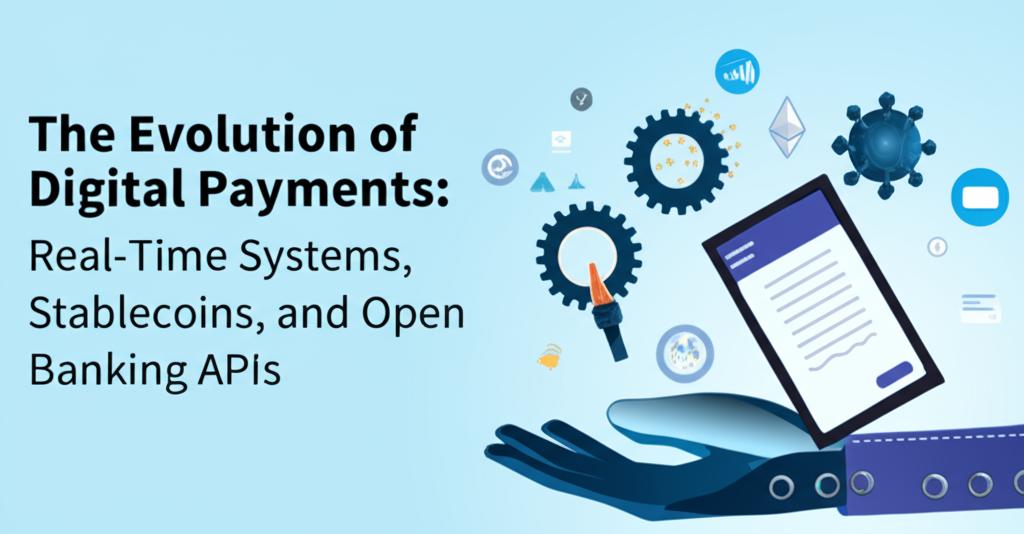The way we exchange money is transforming at an unprecedented pace. Driven by technological advancements and evolving user expectations, the digital payments landscape is shifting towards systems that are faster, more transparent, and deeply integrated. Key drivers of this change include the acceleration of real-time payment networks, the rise of stablecoins as a bridge between traditional and digital finance, and the expanding possibilities unlocked by open banking APIs.
The Acceleration of Real-Time Payments (RTP)Real-time payment systems are rapidly moving from an emerging trend to the new global standard. Unlike traditional methods that often involve delays due to batch processing and banking hours, RTP networks facilitate the instant transfer of funds, 24/7. Funds become available to the recipient within seconds of the transaction being initiated, providing immediate confirmation.
This shift brings significant advantages. For businesses, RTP drastically improves cash flow management by eliminating waiting periods for funds to clear, allowing immediate use of received payments. It streamlines operations, reduces the administrative burden associated with older payment methods like checks, and can lower operational costs. RTP systems often carry richer data than traditional methods, simplifying reconciliation. For consumers, the benefits include instant access to funds like salaries or refunds, and more convenient options for everything from peer-to-peer transfers to bill payments.
Globally, initiatives like the FedNow service in the U.S., the SEPA Instant Credit Transfer scheme in Europe, and successful models like India's UPI and Brazil's PIX are driving adoption. The move towards the ISO 20022 messaging standard further supports this, enabling more data-rich and interoperable payments. As adoption grows, the expectation for instant transactions is becoming the norm across both B2C and B2B interactions.
Stablecoins: Bridging Digital and Traditional FinanceStablecoins, digital assets typically pegged to fiat currencies like the U.S. dollar, are carving out a significant role in the payments ecosystem. Designed to mitigate the price volatility associated with other cryptocurrencies, they act as a bridge between the burgeoning digital asset space and traditional financial systems.
Their key advantage lies in facilitating faster, cheaper, and more transparent transactions, particularly across borders. Stablecoin transactions can settle in seconds or minutes, 24/7, bypassing traditional banking hours and correspondent banking networks. This offers substantial cost savings by reducing intermediary fees and foreign exchange costs, while providing real-time visibility through blockchain technology. Monthly stablecoin transaction volumes have surged, reportedly exceeding $710 billion as of March 2025, indicating their growing acceptance in mainstream financial activities.
While initially prominent in the crypto trading world, stablecoins are increasingly used for remittances, B2B settlements, merchant payments, and even savings in regions with high inflation. However, widespread institutional adoption hinges on regulatory clarity. Jurisdictions globally are actively developing frameworks (like the EU's MiCA or potential U.S. legislation) to address concerns around reserve stability, consumer protection, and illicit finance, aiming to foster trust and integrate stablecoins safely into the financial infrastructure. 2025 is widely seen as a potentially pivotal year for stablecoin regulation and mainstream integration.
Open Banking APIs: Unlocking Data and PaymentsOpen banking represents a fundamental shift in how financial data is accessed and utilized. Through secure Application Programming Interfaces (APIs), banks allow authorized third-party providers (TPPs) access to customer financial data and functionalities, always with explicit user consent. This fosters competition and innovation in the financial services sector.
Open banking enables two primary types of services: Account Information Services (AIS), which allow aggregation of financial data from multiple accounts for improved financial management or credit assessment, and Payment Initiation Services (PIS). PIS allows TPPs to initiate payments directly from a user's bank account, bypassing traditional card networks. This "Pay-by-Bank" model offers a streamlined, often cheaper, and highly secure payment method for consumers and merchants.
The growth in open banking is significant, driven by regulation (like PSD2/PSD3 in Europe) and increasing consumer and business demand. Millions of users are already leveraging open banking-enabled tools, and API call volumes are projected to grow exponentially. While challenges around consumer trust, data security, and standardization remain, open banking is paving the way for more personalized financial products, enhanced customer experiences, and more efficient payment flows.
Convergence and the Future OutlookThe evolution of digital payments isn't happening in silos; these technologies are converging. Real-time payment rails often underpin the instant settlement offered by open banking PIS providers. Stablecoins offer a potential alternative rail, particularly for cross-border scenarios where traditional RTP linkages might be complex. The integration of Artificial Intelligence (AI) and Machine Learning is also becoming crucial across the board, enhancing fraud detection, personalizing experiences, and optimizing processes.
Alongside these trends, Central Bank Digital Currencies (CBDCs) continue to be explored and piloted by numerous countries, potentially coexisting with or competing against private stablecoins in the future.
The trajectory is clear: payments are becoming faster, more data-driven, increasingly embedded, and more globalized. The pressure is on businesses and financial institutions to adapt, embracing these technologies to improve efficiency, enhance customer experiences, and stay competitive in a rapidly transforming financial ecosystem. The future of payments is digital, instant, and increasingly borderless.

